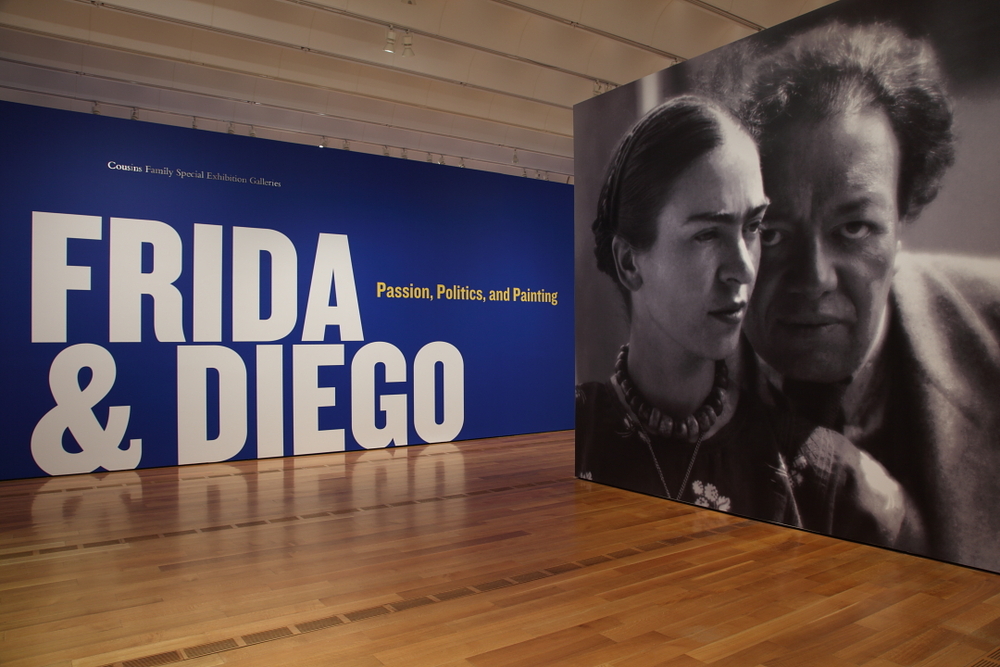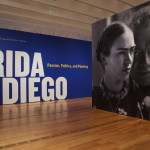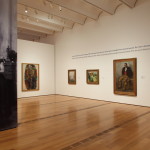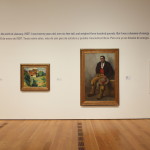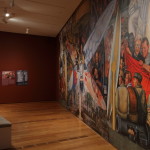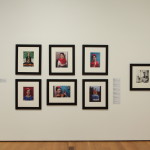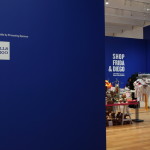Frida Kahlo and Diego Rivera are big business, though it’s difficult to say whether these two Communists would have been surprised by their blockbuster marketability. They were famous in their lifetimes, of course, but the level of interest in the Frida-and-Diego soap opera is much stronger today than it was when they were living and painting. Earlier this year, Atlanta’s High Museum of Art put on an exhibition called Frida & Diego: Passion, Politics and Painting (the first name basis we’re on these two is another curious thing; no museum would put on a "Vincent et Paul" show): it featured several paintings and sketches, some reproductions of Rivera murals, and photographs of the two stars by the great Mexican photographers Manuel Alvarez Bravo and Lola Alvarez Bravo (a married-and-divorced pair that doesn’t get quite as much attention, for some reason). On special nights (like Valentine’s Day) it also featured mariachi bands, salsa dancing, and, best of all, a swarm of Frida Kahlo impersonators.
And about the paintings themselves? There were some of Rivera’s lush "flower festival" paintings, where peasant girls kneel before huge flowers and farmers carry them to market on their backs. Rivera painted these peasant girls and farmers to be seeds and stems for the bursts of flowers, not carrying them or even looking at them so much as giving rise to them. It’s this Gaugin-like delicacy and exuberance in Rivera that makes it difficult to be harsh on him for any didacticism. One could say that even in the flower paintings Rivera preaches: the people and land of Mexico are identified with a beautiful abundance, an abundance mutilated and imprisoned by the land-owning class. Nevertheless, these paintings have an atmosphere quite different from that in his massive allegorical murals dramatizing the clash of Communism with Fascism and/or Capitalism.

Murals like Man at the Crossroads (1933) have a fierce energy, and are grand to look at full scale, but they can’t escape their datedness. The ideological quarrels of the 20th century were violent and hideous in their practical consequences, of course, and they were almost always sterile or repulsive in their artistic manifestations. Rivera’s ideological murals can be great fun, but calling them "great fun" makes me realize that on some level I’m enjoying them as Commie kitsch. They don’t have the visceral effect that the works of Rivera’s fellow muralist José Clemente Orozco have (on me, at least).
Orozco explored the effects of modern ideology as well, but while Rivera championed what he saw as the humane system against the wicked ones, Orozco condemned the entire modern ideological quarrel as (to use Octavio Paz’s phrase) "a prison of concepts." His murals are violent, baroque, even Dantesque in their dark engagement with history and politics. His paintings---Cortez's conquest, Quetzalcoatl raging in the sea, Father Hidalgo lowering a torch to the fiery forge of Mexico, the "gods of the modern world" delivering skeletons and stabbing each other with crosses, swastikas, and hammers and sickles---are somehow more alive than Rivera’s morality plays, which can seem as remote as Catholic and Protestant propaganda from the Reformation.

I do wonder what a modern day equivalent of Man at the Crossroads would look like, though. Uncle Sam, Mark Zuckerberg, Muhammad, Vladimir Putin, and a cardboard cutout of Mao Zedong locked in an every-man-for-himself boxing match? Probably, and with an attractive young person typing on a MacBook at the center of the painting.

Rivera was fascinated by American industry; the dynamism he saw in Detroit and New York inspired some interesting paintings (present at the High’s "Frida and Diego" exhibition). Kahlo found the American way suffocating, however, and it seems she found a congenial counter-world in indigenous Mexican art.
What can I say about Kahlo’s paintings that hasn’t already been said? I’ve seen exhibitions of her work twice: once at London’s Tate Modern, on a rainy evening where her paintings opened a way into an entirely different (brighter and more colorful) world; and then at the show in Atlanta. In both exhibitions she was presented as a victim and martyr of art. The obsession with Kahlo-as-woeful-victim can’t be blamed on museums and curators alone; Kahlo herself invited it, to an extent, with her self-dramatizations. Not necessarily a bad thing, as she was a great painter and many of her self-portraits retain their power to move and shock.

A haiku by Mexican poet José Juan Tablada kept running through my head as I walked past the rows of Kahlo paintings:
Tierno saúz
casi oro, casi ámbar,
casi luz...

The last room of the exhibition (right before the gift shop) featured some excellent photographs of Frida in her Coyoacan courtyard, staring in silent reverie or conversing with the deer, dogs, monkeys, and peacocks that lived with her. I confess (and why not confess, since so much of Kahlo’s art is a confession?) these photographs---most of them taken by Lola Alvarez Bravo, a few by Manuel Alvarez Bravo---were my favorite part of the exhibit. They exuded a mystery and a curiosity that the Kahlo and Rivera paintings didn’t, quite. This is due to their very different artistic styles and forms (photography isn’t painting), of course, but it also seemed like there was something desperate in this Frida-and-Diego spectacle. It’s not that they weren’t great painters; it’s that the showy blockbuster exhibition narrows our visions of art and its history. This is annoying even with older marquee names like Starry Night or Girl With a Pearl Earring, but in the case of 20th century Mexican art---such a rich and varied topography---it crowds out important works that (I imagine) museum-goers would enjoy at least as much as the more familiar Big Names.

So, to the museums of Earth: Why not more Manuel Alvarez Bravo, surely one of the greatest photographers? Why not Rufino Tamayo’s laughing dogs and jester suns? Or María Izquierdo and her circuses? Why not more Lola Alvarez Bravo? Or the European exiles who fled to Mexico City during World War II and made it their permanent home, like those two wonderful alchemists Remedios Varo and Leonora Carrington?
Rivera enjoyed the temporary largesse of patrons like Nelson Rockefeller, but the support of an interested rich patron is a (now long-dead) phenomenon quite different from market and publicity hysteria. Who knows what Frida and Diego would have made of their lucrative canonization, and of the interest in their private lives. I find it hard to avoid the feeling that a good deal of the fascination depends more on their tempestuous marriage than on their works themselves: another chapter in the saga of the Artist as Celebrity.

Writing about two other Mexico City painters (Varo and Carrington), Octavio Paz had this to say:
They are not an example, and they would be scandalized if someone were to propose them as a model. True artists are not exemplary beings: they are beings faithful to their visions. Their distraction is a detachment: when they create, they detach themselves from themselves. Their act rejects the market and its arithmetic morality.
- Frida & Diego gallery view. Courtesy of the High Museum of Art. Photo by Mike Jensen.
- Frida & Diego gallery view. Courtesy of the High Museum of Art. Photo by Mike Jensen.
- Frida & Diego gallery view. Courtesy of the High Museum of Art. Photo by Mike Jensen.
- Frida & Diego gallery view. Courtesy of the High Museum of Art. Photo by Mike Jensen.
- Frida & Diego gallery view. Courtesy of the High Museum of Art. Photo by Mike Jensen.
- Frida & Diego gallery view. Courtesy of the High Museum of Art. Photo by Mike Jensen.
- Frida & Diego gallery view. Courtesy of the High Museum of Art. Photo by Mike Jensen.
- Frida & Diego gallery view. Courtesy of the High Museum of Art. Photo by Mike Jensen.
- Frida & Diego gallery view. Courtesy of the High Museum of Art. Photo by Mike Jensen.
- Frida & Diego gallery view. Courtesy of the High Museum of Art. Photo by Mike Jensen.

